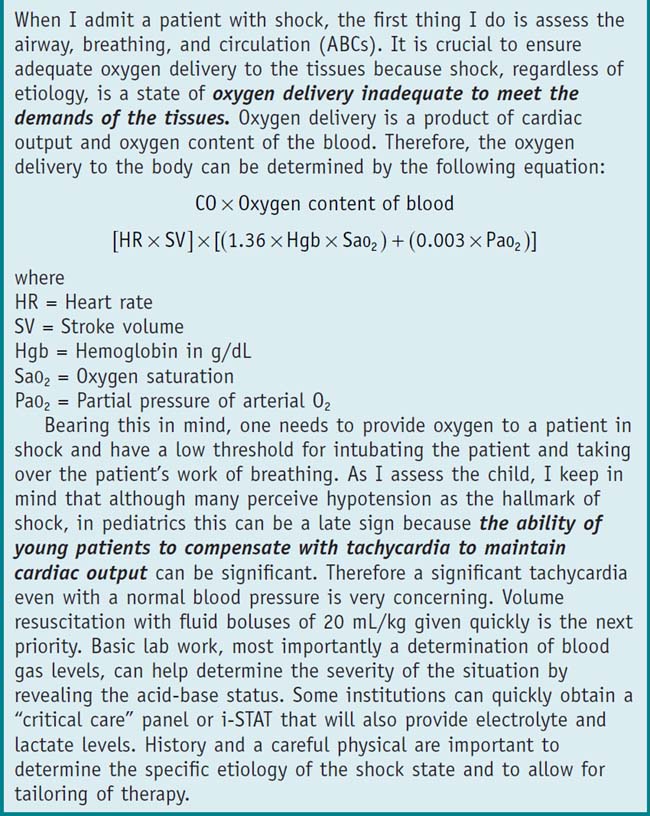Chapter 84 Shock (Case 42)
Patient Care
Clinical Thinking
• Volume resuscitation is an essential part of the management of the majority of cases. While using volume resuscitation one needs to assess the response to volume and watch for signs of pulmonary edema.
• While resuscitating, look for underlying illnesses that may cause or contribute to the illness or modify how the patient responds.
• An early determination of whether the underlying cause is heart failure is mandatory because the early management is very different.
History
• A history of fluid intake and output is vital to assessing both current fluid status and the possibility of dehydration as the cause of shock.
• Infection should be aggressively ruled out because sepsis is often a cause of shock in the pediatric population.
• A detailed recent past medical history should be obtained to evaluate for any immunosuppression, recent corticosteroid use, or malignancy because these can affect initial management and increase the risk for septic shock.
Physical Examination
• Vital signs: Tachycardia is usually the first sign of shock, followed by tachypnea and hypotension. Remember that neurogenic shock and late septic shock may present with bradycardia.
• Extremity perfusion should be noted, specifically capillary refill >2 seconds is concerning. Take note of whether the extremities are cooler than normal or warmer than normal (an indication of peripheral perfusion and systemic vascular resistance).
• Note should be taken of skin turgor, production of tears while crying, mucous membranes, and if applicable whether or not the fontanelle is sunken as markers of fluid status.
• If there is concern for spinal injury, lack of movement of extremities and rectal tone should be noted.
• Rashes can help identify underlying causes of infection or give a clue to coagulation defects that can be associated with severe shock.
• Open wounds or ongoing blood loss or other signs of trauma may suggest hemorrhagic or neurogenic shock.
• Increase in liver size, cardiac gallop, or displaced point of maximal impulse can suggest cardiogenic shock.






